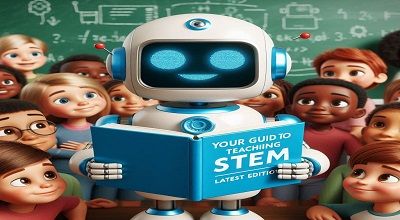Guide to Teaching STEM
Guide to Teaching STEM in 2024 is characterized by several emerging trends and challenges. Reflecting the rapid technological advancements and changing educational needs. Here’s a summary of the key trends:
- Gamification and Digital Classrooms: The integration of online learning platforms and gamified learning apps is becoming increasingly prevalent. These tools make learning more interactive and engaging, especially in STEM subjects. However, there’s a concern about the digital divide affecting students in under-resourced schools. Who may not have access to these technologies?
- Importance of Coding Skills: Coding is no longer just for programmers; it’s becoming a crucial skill across various fields. This trend emphasizes the need to introduce coding in early education, even for young learners. But again, disparities exist in access to coding education, particularly in under-resourced schools.
- Revival of Typing Skills: With the growing importance of digital literacy, typing is gaining renewed focus. Many standardized tests are conducted online, requiring proficiency in keyboarding. However, disparities in access to computer labs and typing programs are evident. Especially in schools with limited resources.
- Immersive Learning with AR/VR: Augmented and Virtual Reality technologies are being increasingly used to provide immersive learning experiences in STEM education. They offer a practical way to conduct complex lab experiments. The initial high costs for AR/VR setups pose challenges for budget-constrained schools despite their long-term benefits.
- Sustainability and Climate Education: There’s a growing focus on integrating sustainability and climate science into STEM curricula. This trend addresses real-world environmental challenges. However, schools with limited resources may struggle to provide comprehensive education in these areas.
Read more…
- Artificial Intelligence in Curriculum Design: AI is being increasingly used to create personalized learning experiences in STEM education. It enables curricula that adapt to individual learning styles, enhancing the effectiveness of education.
- Digital Lab Spaces: Virtual labs and simulations are transforming the practical aspects of STEM education, overcoming the limitations of physical lab spaces and making hands-on learning more accessible.
- Integration of Arts (STEAM): The inclusion of Arts into STEM (forming STEAM) is gaining momentum. It encourages creativity, engagement, and a holistic approach to education, blending artistic creativity with scientific inquiry.
- Equity and Inclusion: Efforts are being made to make STEM education more accessible and inclusive, particularly for underrepresented groups. This includes culturally responsive teaching and ensuring accessibility of resources and technology for all students.
- Industry Partnerships: Collaborations between educational institutions and tech companies are becoming more common. These partnerships bridge the gap between theory and practice, providing students with real-world experiences and insights.
Final Words
These trends reflect a dynamic and evolving STEM education landscape in 2024. Highlighting the need to adapt to technological advancements. While addressing the challenges of equity and resource disparities.
